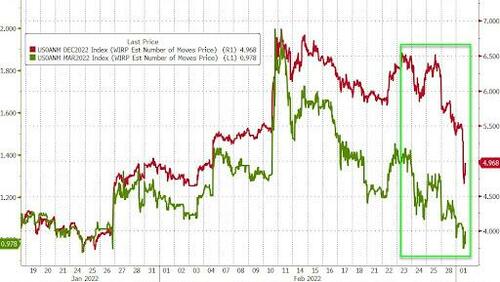Rabobank: This Could Be The Start Of A Protracted Siege Of Kyiv
By Michael Every of Rabobank
Barbarians at the Gate of Kyiv
While a large Russian convoy – stretching 60 km – is getting closer to Kyiv, the capital of Ukraine, and fierce battles are taking place in several other cities, the Ukrainians continue to fight for their country. The Russians are reported to have deployed about 75% of the 160K troops they had amassed around Ukraine. This could be the start of a protracted siege of Kyiv.
Yesterday, the US Treasury Department prohibited US persons from engaging in transactions with Russia’s central bank, its National Wealth Fund, and its Ministry of Finance. The Treasury also sanctioned the Russian Direct Investment Fund and its CEO, Kirill Dmitriev. This follows Saturday’s commitment by the allies to prevent the Russian central bank from deploying its international reserves in a way that would undermine the impact of US sanctions. Russia’s National Wealth Fund is a sovereign wealth fund that came into existence in 2008, after the Stabilization Fund of the Russian Federation (2004) was split in two. In contrast to many other sovereign wealth funds, it serves mainly as a vehicle to invest in the Russian economy. It is controlled by the Russian Ministry of Finance. The Russian Direct Investment Fund (RDIF) was created in 2011 by then-President Medvedev and then Prime Minister Putin to develop relationships with international investors for direct investment in Russia. As the Treasury puts it: “While officially a sovereign wealth fund, RDIF is widely considered a slush fund for (… ) Putin.” The US Treasury imposed these sanctions on Monday before market opening, as allied officials had warned the US Treasury that the Russian central bank was preparing to transfer their holdings on Monday.
However, the Treasury contemporaneously issued a general license to authorize certain energy-related transactions with the Central Bank of the Russian Federation. Of course, this is meant to soften the impact on allied economies, limiting the negative supply shock and inflationary impact of the sanctions, but it also leaves some oxygen for the Russian economy. Will this be enough to cripple Putin into submission?
Meanwhile, there are also indirect effects of the sanctions. Banks from allied countries may be wary of the compliance issues of doing any transaction with Russian banks and err on the safe side. Also, we are seeing multinational corporations leaving Russia, with BP exiting Rosneft and Shell severing ties with Gazprom.
While the ruble tumbled, and the Russian central bank raised rates, global stock markets rebounded from their lows on last Thursday. The EUR/USD is now trading around 1.12, after dropping to 1.11 on Thursday, the day of the invasion.
In other news, Atlanta Fed President Bostic yesterday confirmed he was still in favor of a 25 bps rate hike in March. However, he said that if month-on-month inflation changes remain elevated or move upward, he would consider a 50 bps rate hike in March. Note that the CPI report for February will be released about a week prior to the March meeting of the FOMC. Bostic is a non-voting FOMC participant this year. As we discuss in the US section of the Monthly Outlook, to be released later today, the Russian invasion of Ukraine has reduced the probability of a 50 bps rate hike in March, but at the same time it may raise the need for monetary tightening later this year.
Tyler Durden
Tue, 03/01/2022 – 09:20
via ZeroHedge News https://ift.tt/B90Wrna Tyler Durden

